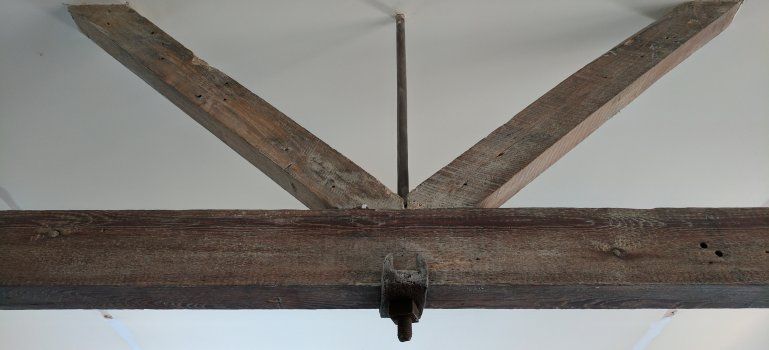The Old Foundry: a Victorian building conversion

The Old Foundry project in Long Melford, Suffolk, is the conversion of a Victorian building into 7 residential units, for a total of 7000 square feet, where we are giving new life to the local history and making new beautiful homes together. In Long Melford, we are making the Old Foundry part of the local life again.
Note: now that the project is complete, you can have a look at the final result here.
Using digital technology to renovate a Victorian building
During the site preparation we couldn’t wait to start the transformation, and finally we started the work! The progress is amazing and you cannot stop taking pictures from all angles. It’s awesome how our technology is bringing a historical building back to life and to see our partners using our digital platform every day! We all follow the progress from remote, communicate on pictures and videos in real time, review the beautiful details of the old building together from different locations.
Interior design that combines original Victorian features with Italian finishes
After each site visit, our imagination fires up higher, as we start to see with our eyes where the transformation will take us. We look at the plans and then at the bare walls and floors and windows, and visualise the Italian finishes in place. The delicate balance between the contrasting details comes from love and respect of the local history. The exclusive Italian kitchens and bathroom tiles will create a gentle contrast with the original materials and structure. We choose textures, colours and materials to highlight the original accents and give a fresh modern feeling to the final result.
The Old Foundry heritage and conservation value and what it means to the local community
We shared some stories over lunch time in the local pub. Some still remember when the building was transformed into a fire station in 1958. That was when the wide opening in the facade was created, to allow the passage of the fire trucks. The opening that makes the look of the building so distinctive will be renovated but kept in the final conversion.
As reported in Long Melford website, the original foundry was established in 1843 by David Ward and his brother-in-law James Silver. The business grew and became quite important in the area, employing 63 men and 4 boys in 1881. Metal works with the Ward and Silver marks are still present and visible in town.
The Old Foundry and the Victorian industrial architecture
THE KING POST TRUSSES
The triangular king post trusses in the upper floor ceiling follow an engineering technique introduced in medieval times; they were common in Victorian times and are still used today. They allow large spaces needed for a workshop. In the Old Foundry the vertical central posts are steel hooks attached to the roof ridge; massive screws are visible at the bottom, connecting the posts to the horizontal lower beams at the ceiling level. You cannot stop craning your neck looking up at this testimony of human ingenuity, picturing the stunning contrast with the renovated spaces.
THE FLINT AND BRICK WALLS
On a beautiful day, the charm of the Old Foundry is irresistible: the colours of the red bricks, the contrast with the blue sky, the wild ivy covering the flint and brick walls. Romans introduced flints mixed with bricks in construction, as flints were sourced locally and were less expensive than cooked bricks. The technique is widely used in Victorian buildings. At the Old Foundry, the pattern of the walls has a simple geometric symmetry and a surprising smoothness at the touch. You cannot resist running your fingers on the coarse walls, and think about the people who built them and lived and worked seeing them every day.
THE WALL TIE PLATES
If you look more closely, you’ll notice round large metal plates on the surface. It is a traditional construction technique that provides lateral constraint to the walls. The plates are are attached to a steel rod that goes inside the joist. They were probably added decades ago, when the ends of the horizontal floor joists started to rot. You can’t help think that structural engineering is the most amazing science, defying centuries and bragging about its immortality to us and to the future generations.
Here at houseUP we specialise in alterations of buildings from 1800 and early 1900 that require structural modifications. Get in touch to learn more about us or to tell us about your project
Gen is managing director and chief of digital strategy at houseUP. She has a background in information security and product management in tech startups.
houseUP is a construction company in London, specialised in high end residential and commercial projects.
